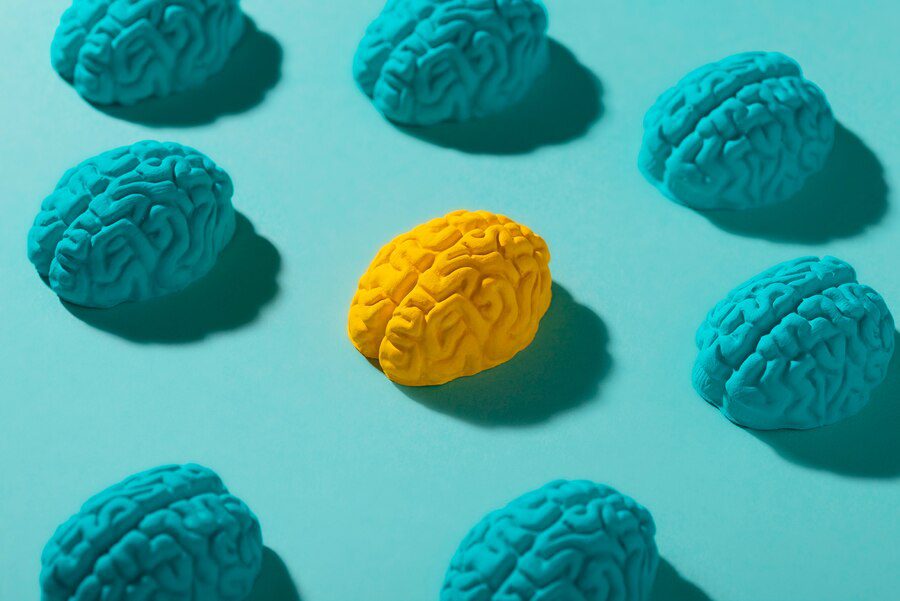⚠️ Medical Disclaimer
Important: This content is for informational and educational purposes only. It should not be used as a substitute for professional medical advice, diagnosis, or treatment. Always consult with a qualified healthcare provider before making changes to your diet, taking supplements, or if you have questions about a medical condition. Never disregard professional medical advice or delay seeking it because of information you read here.
Last Updated on April 7, 2024 by Grace Oluchi
The term “Neurodivergent” is a non-medical term used to describe people whose neurological development and functioning differ from the typical or expected patterns. This means that they have different strengths and challenges than people whose brains don’t have those differences.
The possible differences include medical disorders, learning abilities, and other conditions. Some possible strengths include having a better memory, having the mental ability to picture three-dimensional (3D) objects easily, the ability to solve complex mathematical equations in the head, and many more.
In a much simpler sense:
Neurodivergence is the term for when someone’s brain processes, learns, and/or behaves differently from what is considered “typical” or “expected”.
This article will debunk the stigma concerning neurodivergence, explain what neurodiversity is, and other vital aspects of this topic.
Is neurodivergent a medical term?


Nope, neurodivergent isn’t a medical term, but more of a way to describe people, using words other than “abnormal” and “normal”. It’s this way because there is no single definition of “normal” for how the human brain works.
People who aren’t neurodivergent are called “neurotypical”. This means that their strengths and challenges aren’t affected by any kind of difference that changes how the brain operates.
Way back neurodivergence was considered a problem or abnormal, but as time passed, scientists started to understand that neurodivergence isn’t essentially a cause for alarm and has a positive impact on society. Not all presentations of neurodivergence are a disability, like synesthesia, but all are a difference in how the brain works.
With this shift in mentality, specialists no longer treat neurodivergence as a form of illness. But view it as different methods the brain takes to learn and process information, some of which are viewed as a disability in an inaccessible and ableist society.
What’s the story behind “neurodivergent”?
The term “neurodivergent” came from the term “neurodiversity”. Judy Singer, an Australian sociologist, coined the word “neurodiversity” in 1998 to make people recognize that everyone’s brain develops uniquely. Just like a person’s fingerprints, no two brains — not even those of identical twins — are the same. Because of that, there’s no definition of “normal” capabilities for the human brain.
There are a variety of ways that people’s brains process information, function, and present behaviorally. And rather than thinking there is something wrong or problematic, when some people don’t operate similarly to others, the term neurodiversity embraces all differences.
Neurotypical
This term is used as a descriptor to refer to someone who has the brain functions, behaviors, and processing that is considered the standard or typical by society. You’ll be surprised that neurotypical people may have no idea they are because the subject has likely never come up for them before.
These people usually reach all of their developmental and behavioral milestones at the same times and ages that are considered standard for most people.
As adults, they generally live their lives without having to wonder if their brains function in the same way that others do.
Neurodivergent
Neurodivergence is the term for people whose brains function differently in one or more ways than what is considered standard or typical. There are many different ways that neurodivergence becomes recognizable, ranging from very mild ways that most people wouldn’t notice, to more obvious ways that lead to a person behaving differently than what is seen to be the standard in society.
Types of ways a person can be neurodivergent
Neurodiversity encompasses a wide range of neurological differences, and there are many types of neurodivergent conditions. These are the most well-known neurodivergent examples:
- Autism
- Attention-deficit hyperactivity disorder (ADHD)
- Dyslexia
- Dyspraxia
- Tourette syndrome
Autism
Autism, or Autism Spectrum Disorder (ASD), is a developmental disorder that affects communication, social interaction, and behavior. People with autism may have challenges in social interactions, repetitive behaviors, and communication difficulties.
ADHD
Attention-deficit hyperactivity disorder (ADHD) is a neurodevelopmental disorder and comes with symptoms such as inattention, hyperactivity, and impulsivity. People with ADHD may have difficulty focusing, staying organized, and controlling their impulses.
Dyslexia
Dyslexia is a learning disorder that affects reading, spelling, and writing. Those with dyslexia may have difficulty decoding words, spelling, and processing language.
Dyspraxia
Dyspraxia, also known as Developmental coordination disorder (DCD), is a neurological condition that affects a person’s coordination and movement. A person with dyspraxia may find it hard to do physical activities like tying shoelaces or catching a ball.
Tourette syndrome
Tourette syndrome is when someone has tics, which are repetitive movements or sounds that they can’t control. It can be things like blinking a lot or making noises like coughing or sniffing.
Some other conditions that are most common among those who describe themselves as neurodivergent
- Dyscalculia (difficulty with math)
- Dysgraphia (difficulty with writing)
- Down syndrome
- Bipolar disorder
- Obsessive-compulsive disorder
- Social anxiety (a specific type of anxiety disorder)
- Williams syndrome
- Prader-willi syndrome
Frequently asked questions
What are the signs I’m neurodivergent or if my child is neurodivergent?
It depends on the condition you’re looking out for or suspect.
For autism, treatments often include behavioral therapies, speech therapy, occupational therapy, and sometimes medication to manage symptoms.
ADHD is commonly treated with behavioral therapy, medication, and lifestyle changes.
As for Dyslexia, interventions may involve specialized reading programs, educational support, and accommodations.
Dyspraxia treatments may include occupational therapy, physical therapy, and skill-building exercises.
Tourette syndrome is often managed with behavioral therapies, medication, and support groups. Each condition may require a one-on-one approach and treatment, based on your needs and symptoms.
If you relate to any of these conditions, don’t be afraid or discouraged, you and your child are beautiful and amazing. To gain more clarity, it’s advisable to check in with your doctor.
Can I treat, prevent, or cure being neurodivergent?
Neurodiversity refers to the unique way that each person’s brain develops. That means it’s not preventable, treatable, or curable. However, various interventions and treatments can help manage symptoms and improve quality of life. If a specialist or healthcare provider diagnoses you (or someone you care for) with the conditions listed above, they can share resources for people with that condition. There are many possible management options, therapy programs, and more.
It’s essential to focus on understanding, and acceptance, and provide the necessary support for those who are neurodivergent.
Where can I learn about what it means to be neurodivergent?
Apart from getting all the help you need from Medspurs, you can also learn more about neurodiversity by exploring resources online, reading books, or connecting with advocacy groups on social media that focus on neurodiversity. There are also many informative articles and videos available that can provide valuable insights into what it means to be neurodivergent. Also, it’s a fascinating topic that sheds light on how people experience the world. Therefore, always remember that Medspurs will always be here for you, and also to answer your burning questions!
What are some common misconceptions about neurodiversity?
Some common misconceptions about neurodiversity include the belief that neurodivergent people are all the same or that their differences are just a result of a disorder. It’s important to understand that neurodiversity encompasses a wide range of experiences and strengths, and it’s not something that needs to be “fixed” or changed. Embracing neurodiversity means celebrating the unique perspectives and contributions of people with diverse neurological conditions!
A message from Medspurs
It’s important to remember that “neurodiversity” is a beautiful part of the human experience. It is a word used to explain the unique ways people’s brains work. While everyone’s brain develops similarly, no two brains function just alike.
Each person’s unique strengths and challenges are what make life interesting and mysterious. This may be differences in social preferences, ways of learning, ways of communicating, and perceiving the environment. Embracing neurodiversity means celebrating differences and promoting understanding and acceptance.
Remember, you are valued just as you are, and your journey is valid and important. Keep shining bright and being true to yourself. You are not alone, and there is a community of support and understanding around you. Keep being amazing!

